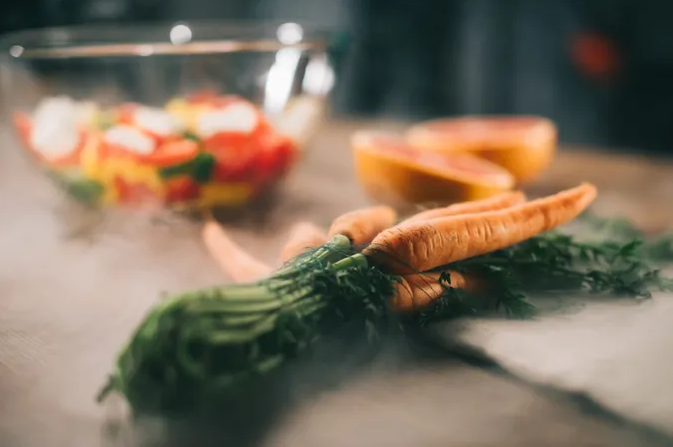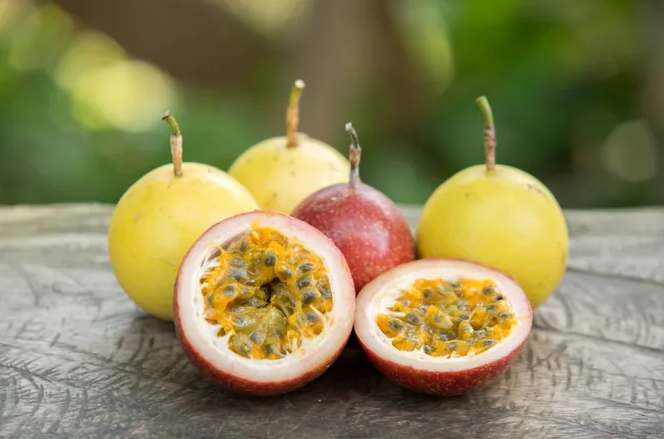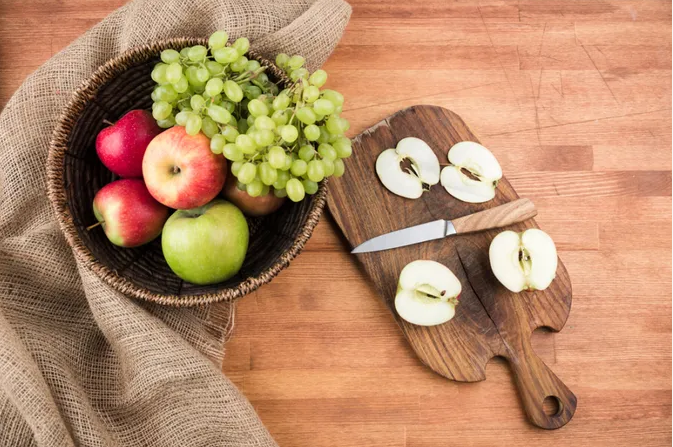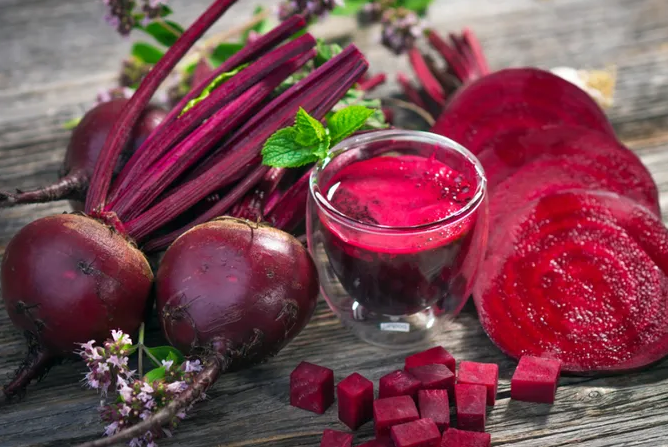
As you know, eating seasonally is better for your health and the environment. But what to choose in February? We have put together a basket of 10 fruits and vegetables to choose from, with their benefits and some recipes. Your body and the planet will thank you! Marie Y.
1 / 10 The lemon
The star fruit of grandmothers’ tips, lemon is very rich in vitamin C. It is full of benefits to restore pep to the body. Its pulp is rich in calcium, potassium and magnesium. Lemon is an excellent antiseptic, just like garlic and onion. Its benefits strengthen natural defenses and constitute an excellent remedy against colds, tonsillitis but also against gastroes. Almost a miracle fruit!
Lemon choice and recipe ideas
To benefit from all the benefits of lemon, you can drink lemon juice when you wake up to start the day in great shape and detoxify your body. You can also use it fresh by squeezing a lemon on your salads, your fish, your fruit salads to which it gives a boost of pep. Choose a firm, heavy lemon. Make sure his skin is fine and shiny.
2 / 10 The celery
Celery is a delicious vegetable that contains a lot of antioxidants. Tender and crunchy, it can be eaten in several ways: raw, stuffed, chopped, pressed or as a flavoring for your vegetable broths. A low-calorie food, it is rich in fiber. Celery is known to improve digestion, it is a friend of fragile stomachs.
Choice, conservation and recipe ideas
Choose celery with firm, green branches. Avoid using celery with dry branches: this means that it is not fresh. Available all year round, keep it in the fridge in a tightly closed bag because its smell is powerful.
3/10 Apple
Available all year round and therefore in February, the apple is extremely rich in antioxidants and fiber, and it is one of the best “healthy” fruits. Its consumption helps reduce the risks of cholesterol, diabetes and cardiovascular diseases. The apple also acts as an appetite suppressant and brings a feeling of satiety. Very practical if you are on a diet.
Choice, conservation and recipe ideas
The skin of apples is particularly rich in nutrients and vitamins. But we also know that it particularly absorbs pesticides… So what to do? Rinsing is not sufficient, so choose organic apples, which are better protected against pesticides. And don’t miss out on a good rinse. The best rinse is to soak your apples for 15 minutes in a basin with 1 teaspoon of baking soda. Be careful of apples that are too shiny, this means that they have been waxed to combat moisture loss. Shoe polish is certainly edible, but can also contain allergens. So choose apples that are firm, fragrant and if possible organic. The apple is delicious plain, but also cooked in a saucepan, in the oven or in a pan.
4/10 The pomelo
Did you know ? The grapefruit tree produces grapefruit, a huge exotic fruit (which can weigh up to 8 kilos) consumed mainly in Asia. A pomelo, on the other hand, is the citrus fruit that we usually eat and call grapefruit. February is peak season for grapefruit. Rich in vitamin C, it is excellent against winter ailments in the same way as lemon, orange or clementines. Thanks to its antioxidants, it deeply cleanses the pores of the skin and delays the first wrinkles. You can consume pomelo until spring, making good refreshing juices.
Choice, conservation and recipe ideas
As with oranges or clementines, opt for a smooth and firm pomelo. If it’s heavy, it’s juicy. Be careful, its color must be taken into account. A pink or red pomelo if you prefer it sweet. A yellow pomelo, if you prefer it tangy. In cooking, the skin of a pomelo does not tolerate cooking well. Better to eat it plain, cut in half and possibly sprinkled with a little sugar. It goes well with salads, and is eaten in juice and jams.
5/10 Pineapple
Pineapple is a fruit rich in vitamin C and helps you stay healthy every day. It is also rich in cellulose and bromelain: enzymes that promote intestinal transit. For those who have digestion problems, consuming it can be a good remedy. Its anti-inflammatory effects have been observed in humans. Fresh or juiced pineapple is rich in manganese, vitamins B1 and B6. Easy to combine, it fits into many recipes and flavors dishes. Preferably serve it plain to make the most of its benefits!
Choice, conservation and recipe ideas
A good pineapple is firm, heavy and shiny. Its sweet scent develops when it is ripe. Once cut, you can keep it in the fridge for between 3 and 5 days.
6/10 Endive
We dismiss endive too quickly for fear of bitter flavors. But when fresh or well cooked, it loses its bitterness. Take the time to discover its benefits! Endive is particularly rich in water (95%), potassium and vitamin B9: hydrating and detoxifying properties for the body. Your liver will thank you! In addition, it is beneficial for cells. Thanks to its significant sources of trace elements and antioxidants, it fights against the first signs of aging.
Choice, conservation and recipe ideas
Fragile, endive is easily damaged. It is for this reason that it must be handled with care. A beautiful endive is firm, white with yellow tips, and crunchy. Be careful, a stained endive probably lacks freshness. To preserve, soak the endive in cold water then squeeze it gently through absorbent paper. You can keep it like this for a week. Natural, gratinated, braised… endive can be enjoyed both raw and cooked.
7/10 The leek
Leek has great qualities for our health. It is very rich in fiber which provides a feeling of satiety and helps to better eliminate toxins from the body. Leek is an excellent diuretic due to its richness in water, it is also a source of mineral salts, particularly potassium. Rich in vitamin E, celery acts against skin aging.
Choice, conservation and recipe ideas
Leek can be eaten both raw and cooked. It is still recommended to consume it raw in order to retain these benefits. Cooking for too long causes it to lose its nutritional properties. Leeks, whose leaves are dark in color, are the freshest.
8/10 The carrot
This winter, make carrots your health ally! Carrot is rich in carotene, a powerful antioxidant that stimulates natural defenses, slows down tissue aging and improves skin condition. The darker a carrot is, the better it is loaded with carotene. Provided with fiber, it acts as an appetite suppressant and promotes intestinal transit. Finally, carrots are rich in vitamin A, essential for good vision. Its consumption helps to fight against the risks of degeneration and cataracts.
Choice, conservation and recipe ideas
Available all year round, carrots can be eaten raw or cooked. However, nutritionists recommend eating it raw because it provides more nutrients. Raw, it is eaten grated in salad or in juice. Cooked, it accompanies meat dishes and is also used as an ingredient in cakes such as “carrot cake”.
9/10 The lamb’s lettuce
This winter, don’t miss the lamb’s lettuce! Low in calories, raw lamb’s lettuce contains carotene (like carrots), vitamin C and vitamin A. Low in carbohydrates, it makes an excellent salad. Lamb’s lettuce is a salad containing chlorophyll, a pigment which gives it its green color. Some research shows its preventive effect against cancers.
Choice, conservation and recipe ideas
Choose green and not wilted lamb’s lettuce leaves: this is a guarantee of freshness. It will keep for between 3 and 5 days in the fridge. Fragile, lamb’s lettuce, however, does not tolerate cooking well. It is preferably eaten raw, in salads, but there are also some recipes that use lamb’s lettuce as an ingredient.
10/10 The banana
Potassium, magnesium, fiber, vitamins B and C… bananas provide the body with a quantity of vitamins and minerals. A source of energy, it helps to stay in shape throughout the day. This is why it makes an excellent breakfast, especially for children! Rich in pectin, bananas also promote intestinal transit and fight against stomach aches. Provided with iron, bananas are recommended in the treatment of anemia. Researchers have discovered that bananas act on the nervous system and relax people who are stressed on a daily basis. This is mainly due to the presence of vitamin B.
Choice, conservation and recipe ideas
Banana is available all year round and therefore in February. It is an exotic fruit that keeps very well, provided you protect it from the cold. It is advisable to choose green bananas and let them ripen at home, at their own pace. Raw or cooked, bananas fit perfectly into savory or sweet recipes!





